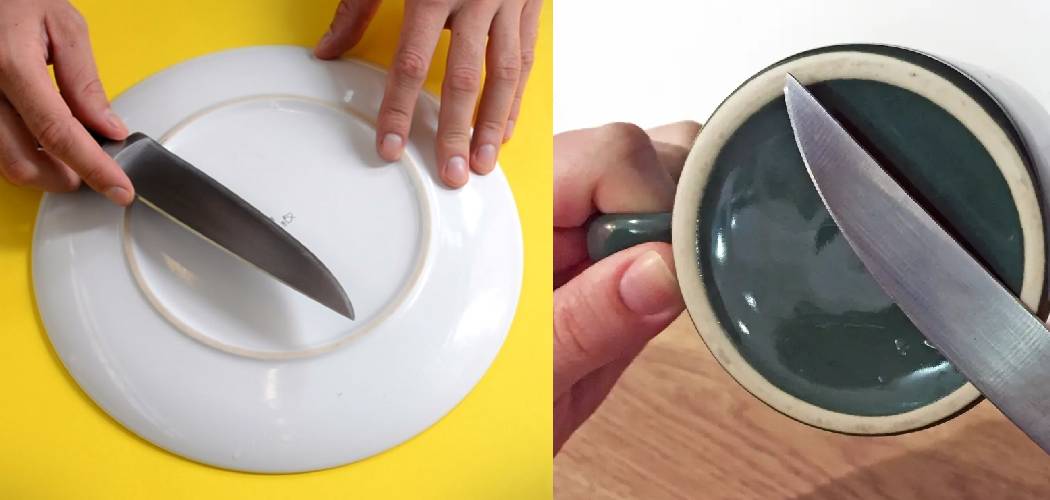Do you have a knife that’s too dull to cut through anything? This blog post will show you how to sharpen it without a sharpener. It’s easier than you might think.
If you’re like me, you probably use your kitchen knives every day. And if you’re like me, you know that keeping your knives sharp is key to avoiding injury and having a more efficient kitchen. But what do you do when your knife gets dull and you don’t have a sharpener handy?
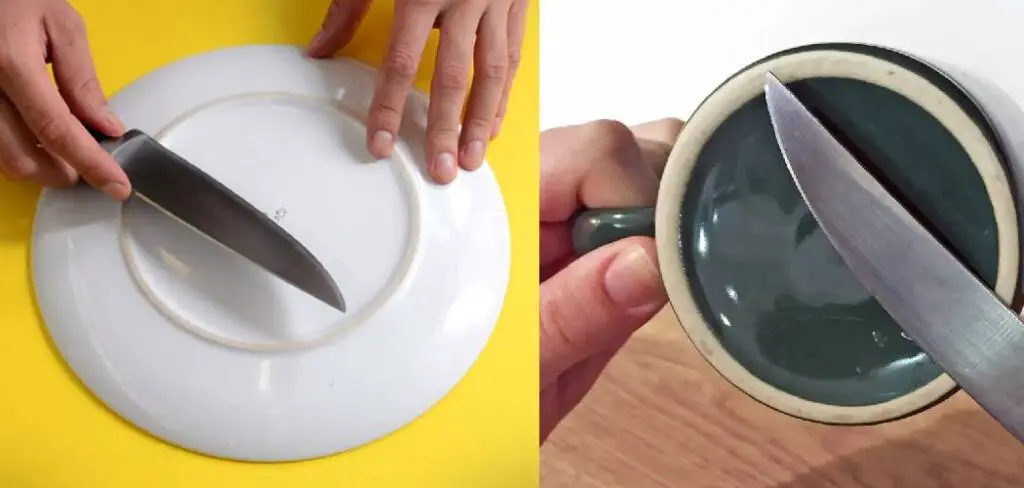
Knives are essential for cooking, but they can be dangerous if they’re not sharp. You don’t need a sharpener to keep your knives in good shape – there are plenty of other ways to do it. In this blog post, I’m going to teach you how to sharpen a knife without a sharpener. Stay safe in the kitchen, and keep those knives razor-sharp!
Is It Easy to Sharpen a Knife Without a Sharpener?
Some people might be hesitant to attempt sharpening a knife without a sharpener, thinking that it’s too complicated or risky. But the truth is, it’s actually quite simple and safe as long as you follow these steps carefully.
Always make sure to have a firm grip on the knife and keep your fingers out of harm’s way. Also, remember to use caution when handling any sharp objects. Now that we’ve got that covered let’s move on to how to sharpen your knife without a sharpener.
You Will Need the Following:
- A honing steel
- A leather belt or other leather material
- A wooden cutting board
With these simple materials, you can sharpen your knife without a sharpener in no time.
10 Easy Steps on How to Sharpen a Knife Without a Sharpener
1. Using Honing Steel:
A honing steel is typically used after each use of the knife to maintain its edge, but it can also be used to sharpen the blade if done correctly. Hold the honing steel vertically and at a ninety-degree angle to the cutting board. Start with the base of the knife’s blade against the steel and pull it towards you in one smooth motion, making sure to keep that ninety-degree angle. Repeat on the other side for about ten strokes per side, and voila – sharper knife!
2. Using Leather:
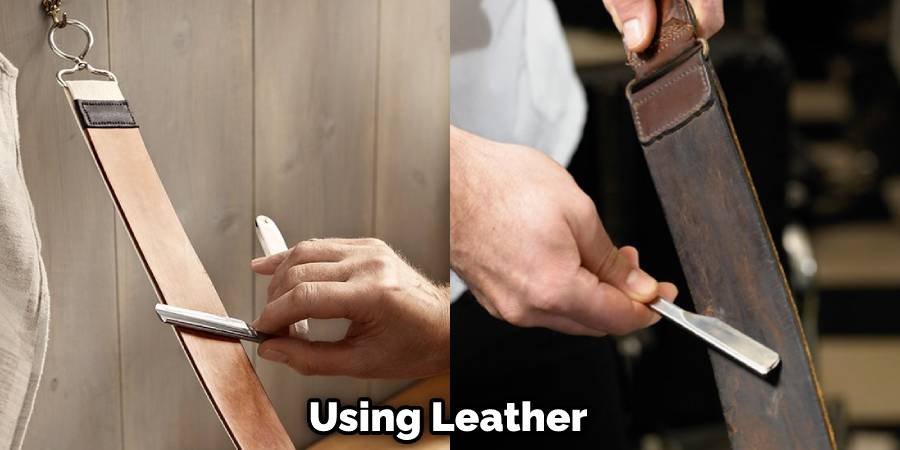
This method may sound strange, but trust me – it works! First, lay a strip of leather flat on a stable surface. Then, using medium pressure, run the blade against the leather in a forward motion several times on each side of the knife. This method works best with a smooth leather surface, like a belt or piece of clothing.
3. Using Ceramic:
Grab a coffee mug or plate from your kitchen cabinet and use it as an impromptu sharpening tool. First, gently draw the blade against the unglazed bottom of the ceramic piece in a forward motion several times on each side of the knife. Be careful not to apply too much pressure – this could potentially break the ceramic!
4. Using Aluminum Foil:
This method is similar to using ceramic – first, crumple up a small piece of aluminum foil. Then, gently draw the blade against the foil in a forward motion several times on each side of the knife. Just like with ceramic, be careful not to apply too much pressure to avoid potentially damaging the foil or the knife.
5. Using Sandpaper:
You can use fine-grit sandpaper to sharpen your knife by first laying the sandpaper flat on a stable surface. Then, using medium pressure, run the blade against the sandpaper in a forward motion several times on each side of the knife. Make sure to use fine-grit sandpaper – anything coarser could potentially damage the blade.
6. Using a Smooth Stone:
Find a smooth, flat stone and dampen it with water. Then, using medium pressure, run the blade against the wet stone in a forward motion several times on each side of the knife. Remember to keep the stone damp during this process – if it starts to dry out, just add more water.

7. Using the Stovetop:
Believe it or not, you can use your stovetop to sharpen a knife! First, turn on one of the burners and wait for it to heat up. Then, carefully run the blade against the burner several times on each side of the knife. Be extremely cautious during this process, and make sure to keep your fingers out of harm’s way.
8. Using a Chilled Metal Rod:
Place a metal rod (such as a skewer or chopstick) in the freezer for a few minutes to chill it. Then, using medium pressure, run the blade against the chilled metal rod in a forward motion several times on each side of the knife.
9. Using Asphalt:
Find an area of asphalt, such as a driveway or sidewalk, and run the blade against it in a forward motion several times on each side of the knife. Be sure to clean off any dirt or debris from the asphalt before using it to sharpen your knife.
10. Using a Credit Card:
Believe it or not, you can use a credit card as a sharpening tool! First, remove any extra layers from the credit card (such as stickers or protective coverings) and then run the blade against the edge of the card in a forward motion several times on each side of the knife. Just be careful not to apply too much pressure or damage the credit card in the process.
These methods may not give you a perfect edge, but they can definitely do in a pinch and buy you some time until you have access to a proper sharpener. Happy sharpening!
7 Additional Tips and Tricks:
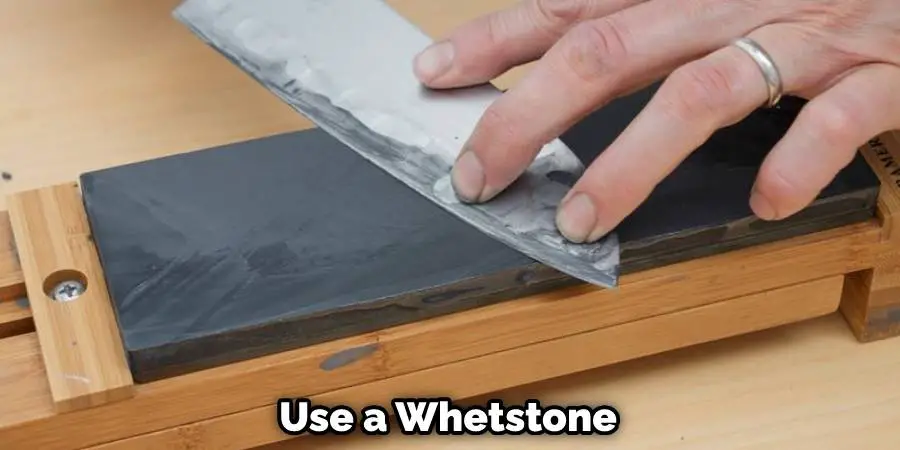
- Use a ceramic plate or mug. Several times, stroke the blade against the rough bottom of the plate or mug.
- Use a strop. Place the blade against the strop and stroke away from you several times on each side of the blade.
- Use a whetstone. Soak the stone in water or lubricant, then stroke the blade against it several times on each side.
- Apply honing steel to the blade. Stroke the blade against the steel in a smooth, consistent motion several times on each side.
- Use a piece of smooth glass. Run the blade against it in a back and forth motion until sharpened.
Remember always to use caution when sharpening your knife without a proper sharpener, as you may risk injury if done incorrectly or with too much force. It’s also important to regularly maintain and sharpen your knife with a sharpener for the best results.
5 Precautionary Measures You Can Take:
- Always use a cutting board to protect your working surface.
- Make sure to use steady and controlled pressure while sharpening the knife.
- Always sharpen away from your body to prevent any accidents.
- Make sure the surface you are using for sharpening is stable and secure.
- Wear protective gear, such as gloves, to ensure your safety.
Taking Precautionary measures is important in any sharpening process, but even more so when using alternative methods without the use of a sharpener.
Different materials can be used for sharpenings, such as a ceramic plate or sandpaper; however, it’s important to research the material and how it will affect your knife before beginning the sharpening process.
You Can Check It Out to Test Auger Motor in Pellet Stove
Why is It Important to Keep Knives Sharpened?
It is important to keep knives sharpened because a dull knife can be more dangerous to use as it requires more force and may slip easier. A sharp knife also makes the cutting process easier and more efficient. It is important to sharpen and maintain your knives for safety and effectiveness regularly.
Additionally, using a sharp knife can help preserve the quality and taste of the food being cut. A dull knife can cause uneven cuts and bruises on delicate foods.
Overall, keeping your knives sharpened is crucial for safety, efficiency, and preserving the quality of your food.
It is also important to properly store your knives to maintain their sharpness and prevent accidents. This can include
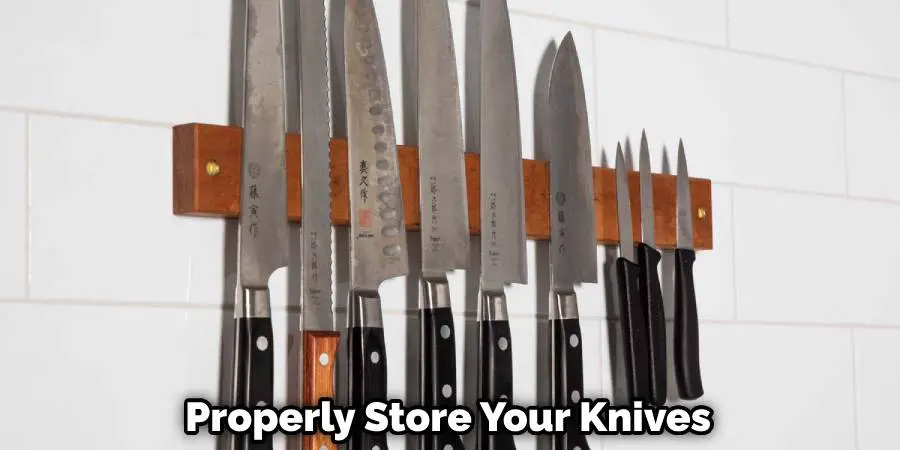
Conclusion
Now that you know how to sharpen a knife without a sharpener, put your new skill to the test! Practice makes perfect, so don’t be afraid to experiment. If you find that your knives are still not as sharp as you’d like them to be, consider investing in a quality sharpener. With a little bit of care and practice, you’ll be able to keep your knives razor-sharp for years to come.
Although it may seem daunting at first, learning how to sharpen a knife without a sharpener is not as difficult as one might think. With a little practice, anyone can become an expert at this handy skill. The next time your knives start to get dull, don’t reach for the sharpener – try one of these methods instead.
Hopefully, this article has given you the tools and knowledge to confidently sharpen your knives without a sharpener safely and effectively. Happy sharpening!
You Can Chack It Out Wash Mechanic Clothes

